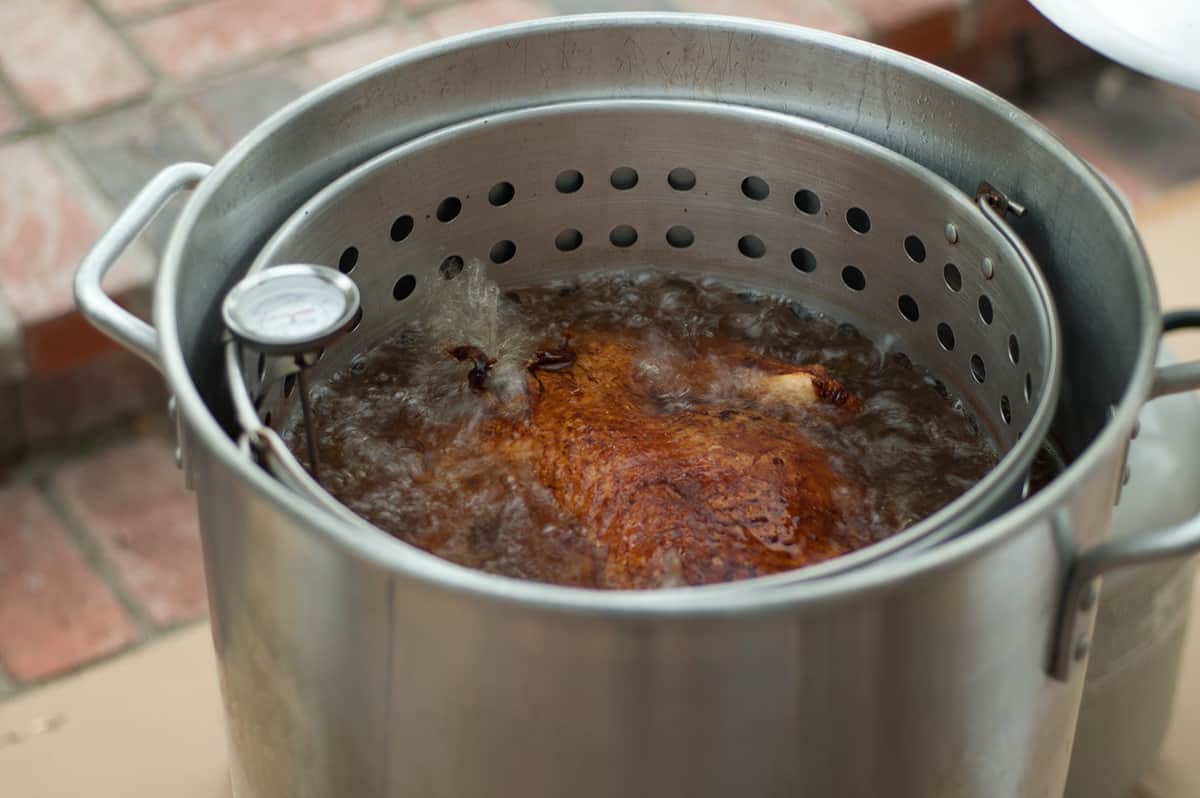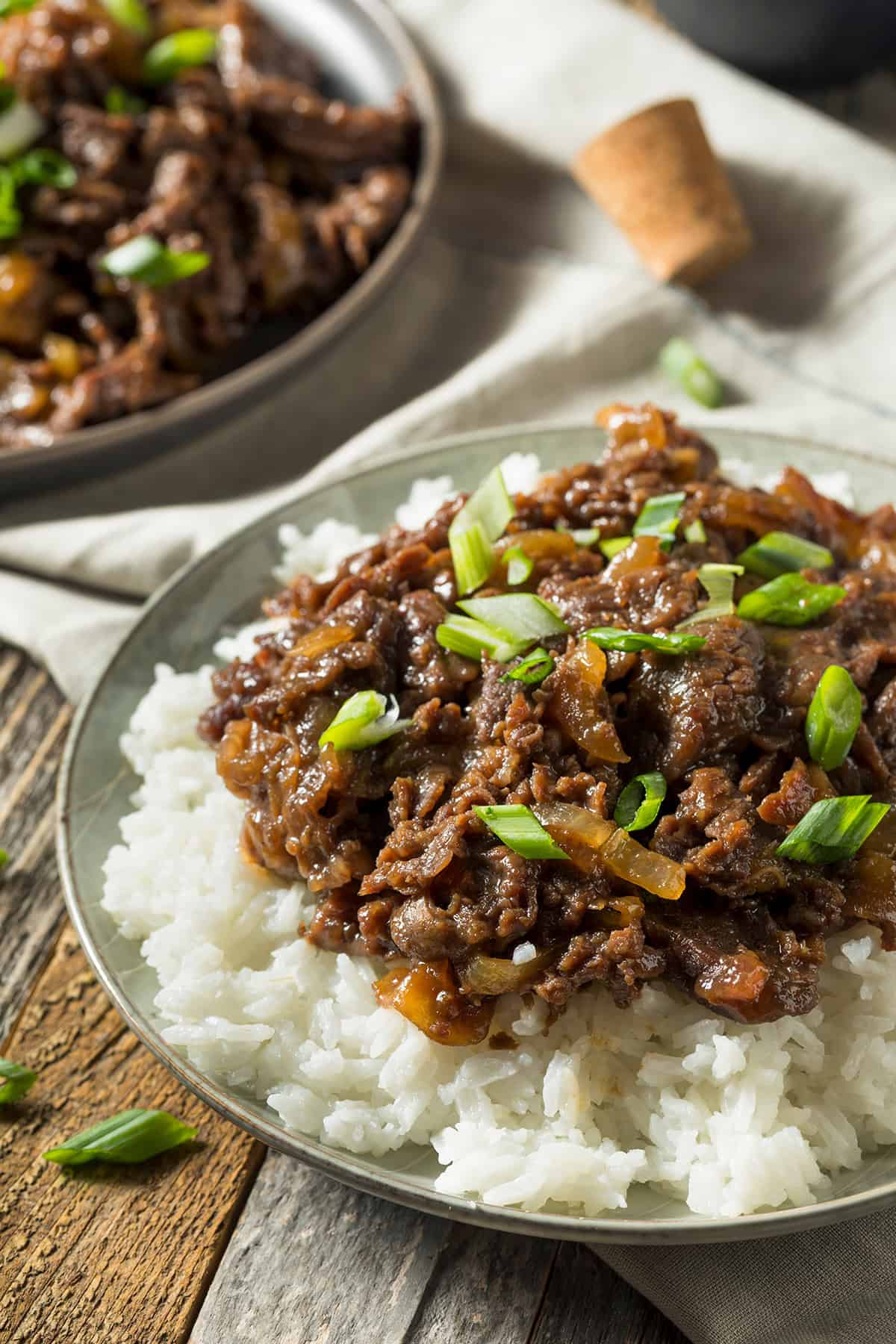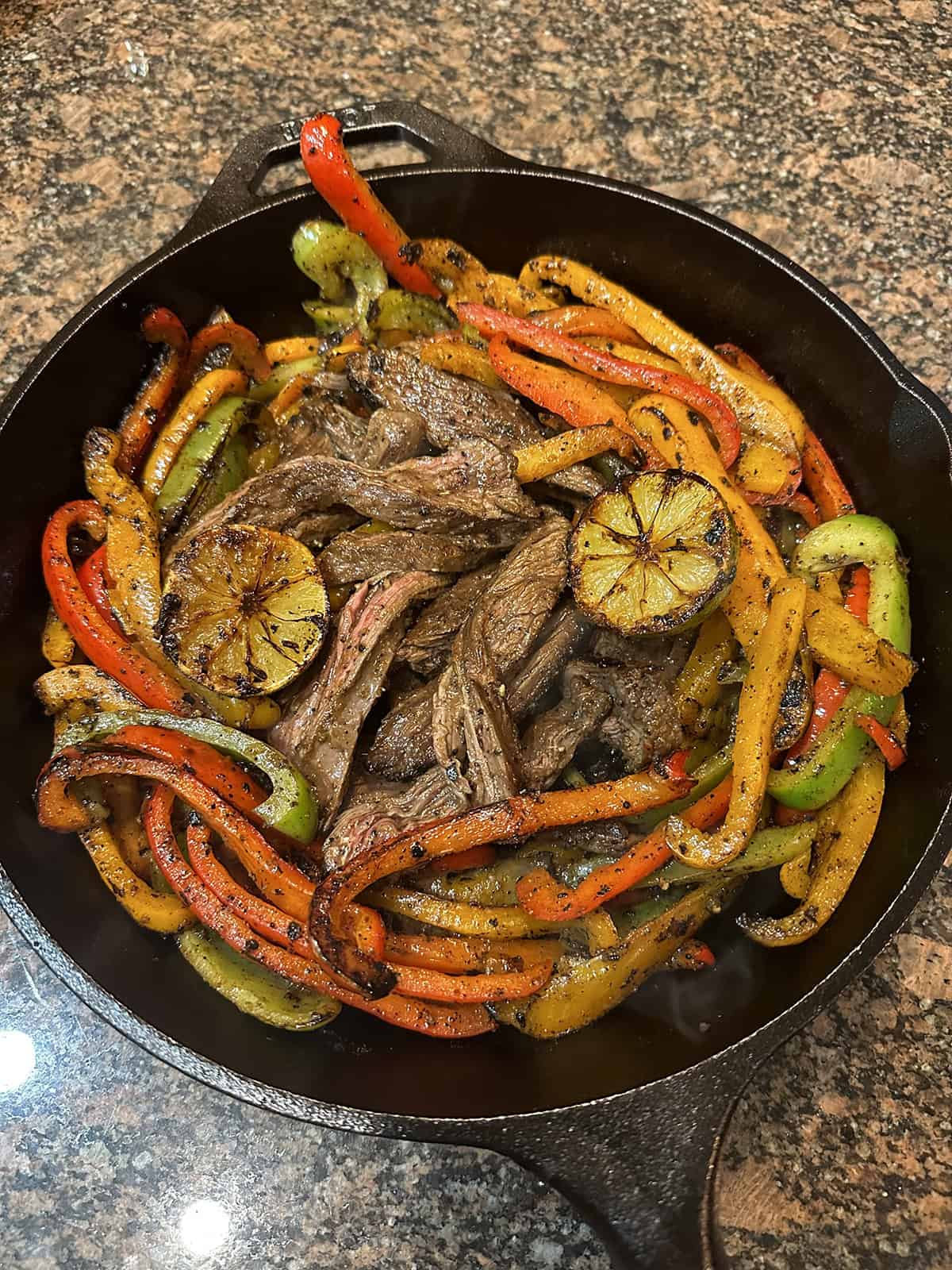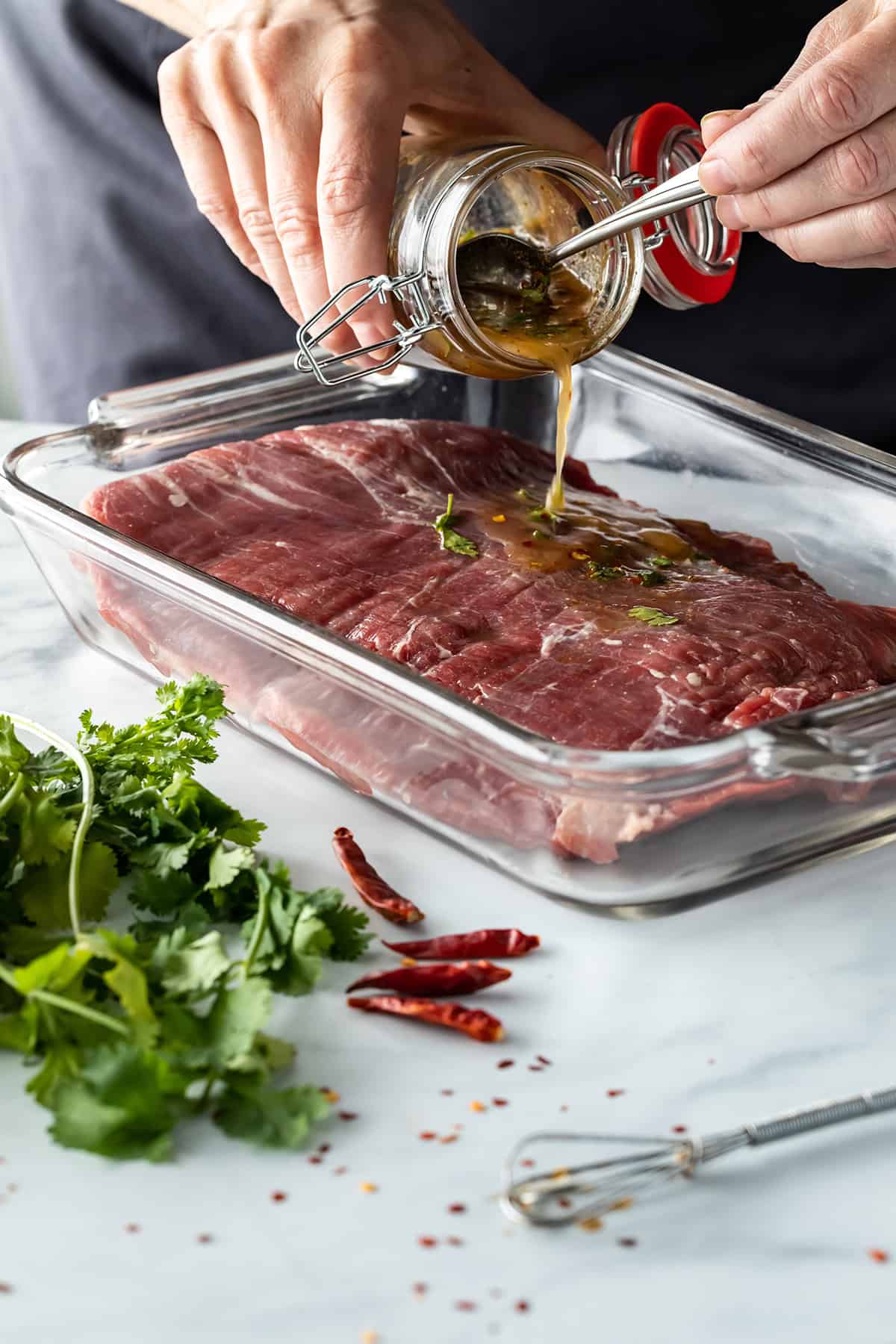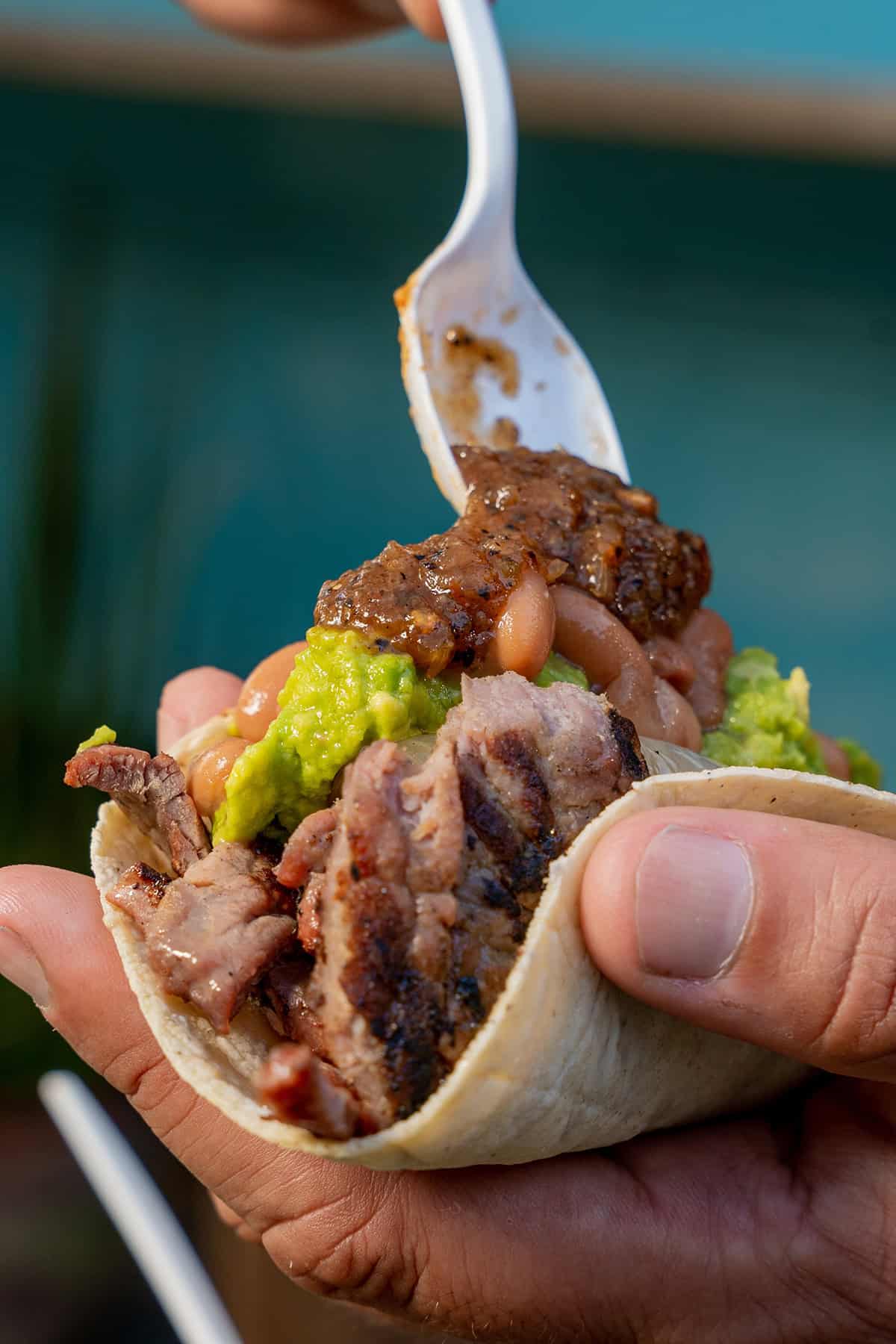For years and years, you and your family have probably enjoyed the same roasted turkey recipe that has been passed down from generation to generation. While tradition is great and all, it doesn’t hurt to try new things. For instance, have you ever tried deep-frying a turkey before? When deep-frying something so large, it’s important that you use the right type of frying oil.
Avocado oil is the ideal type of oil used for deep-frying turkeys. It has a smoke point of 520°F, so it won’t discolor your turkey. Avocado oil has a flash point of 600°F, so it doesn’t catch fire as easily as other types of fats.
There are other reasons avocado oil is the perfect fat of choice for deep-frying turkey, which I’ll cover in this guide. I’ll also explain how to deep fry a turkey safely in your backyard.
What Is Deep-Frying?
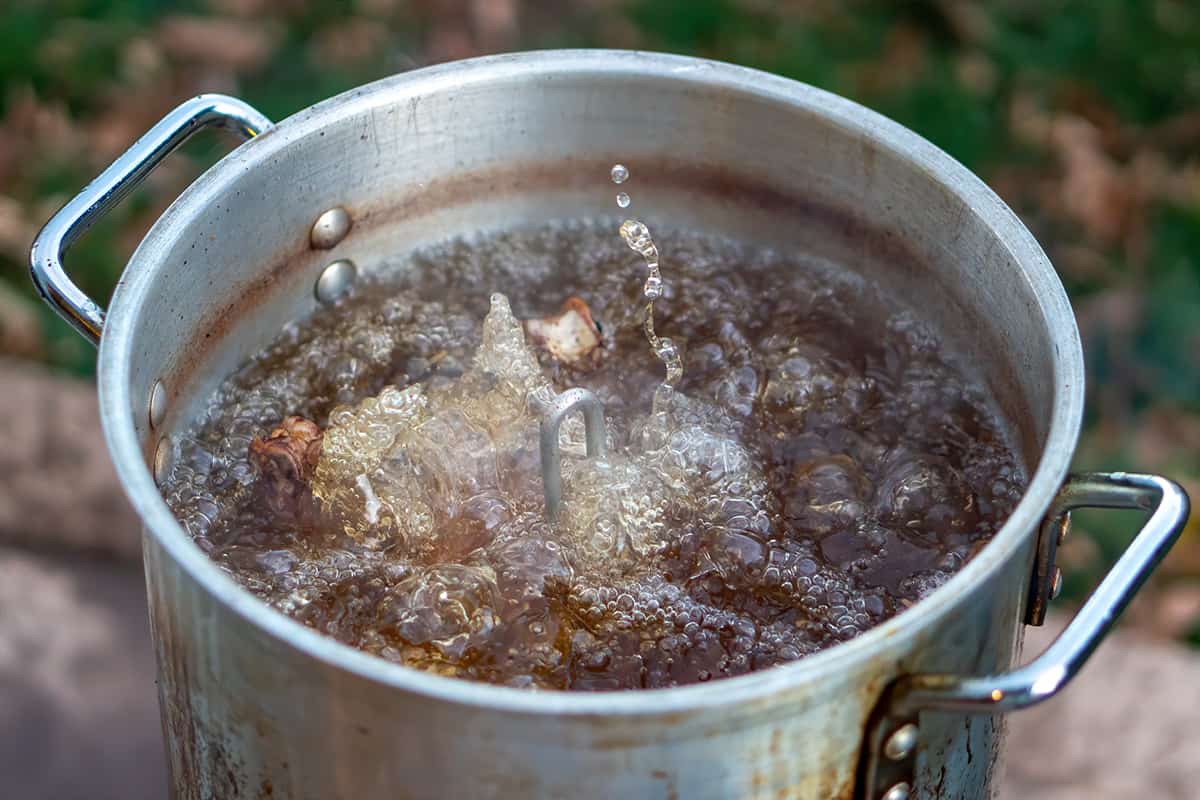
Deep-frying differs from shallow-frying in terms of how much oil is used in the cooking process. To shallow-fry or pan-fry something, you only need about 1-2 inches of oil in the pan. Deep-frying, on the other hand, requires enough oil to completely submerge the food item, cooking it evenly from top to bottom without flipping it over.
The process is the same when deep-frying a turkey. You need enough oil to cover the turkey by about 3 to 4 inches, which, if you’re using a humungous 20-pound bird, can be more than 5 gallons!
Best Oil to Deep Fry Turkey
When it comes to deep-frying food, there are certain oils you want to choose and certain oils you want to stay away from.
From a very general standpoint, there are at least four factors you need to consider when choosing the right oil for deep-frying turkey—smoke point, flash point, how much the bird will absorb fat, and how the oil will affect the turkey’s flavor.
Smoke Point
The smoke point of an oil or fat refers to what temperature it loses its shine and begins to darken. When it darkens, some of that color will be transferred to your food, giving it an unsightly darkish hue that is not very appetizing. In addition, oil that has reached its smoke point and gone beyond it can cause your food to develop a foul odor, which is definitely not something you want to happen when hosting a Thanksgiving party.
Ideally, the oil you use to deep-fry a turkey will have the highest smoke point possible. That way, you can leave the bird in the stockpot for upwards of 45 minutes without having to worry about it becoming overly darkened and developing a chewy texture.
Flash Point
If you thought discolored turkey was the worst thing to happen to your Thanksgiving feast, think again. The flash point of a frying oil refers to the temperature at which it will catch fire. The lower the flash point, the more easily the oil and its vapors can catch fire. Have you ever seen anyone rub their bellies after feasting on a turkey with third-degree burns? Neither have I.
Again, the perfect oil for deep-frying a turkey should have a high flash point. When the oil vapors inevitably make their way out of the stockpot, the last thing you need is for them to catch fire and ruin your deep-frying project.
Fat Absorption
The deep-frying process introduces a ton of calories into the food you fry. While turkey is relatively low in fat, keeping it in a batch of boiling oil will make it lose its leanness. That’s not entirely a bad thing since fat is a flavor-delivery vehicle. The more fat there is in a food, the tastier it becomes.
However, if you want to enjoy a turkey feast without expanding your waistline too much, you should look for a frying fat that is relatively low in saturated fat.
Flavor
The best deep-frying oil is one that doesn’t introduce flavor into the turkey. The flavor of your turkey should speak for itself, although using oils in the marinate or brine is a great way to enhance its deliciousness. This is only a minor point to consider, but it’s worth noting if you want your turkey to taste as turkey-ish as possible.
Why Avocado Oil Is the Best Oil to Deep Fry Turkey
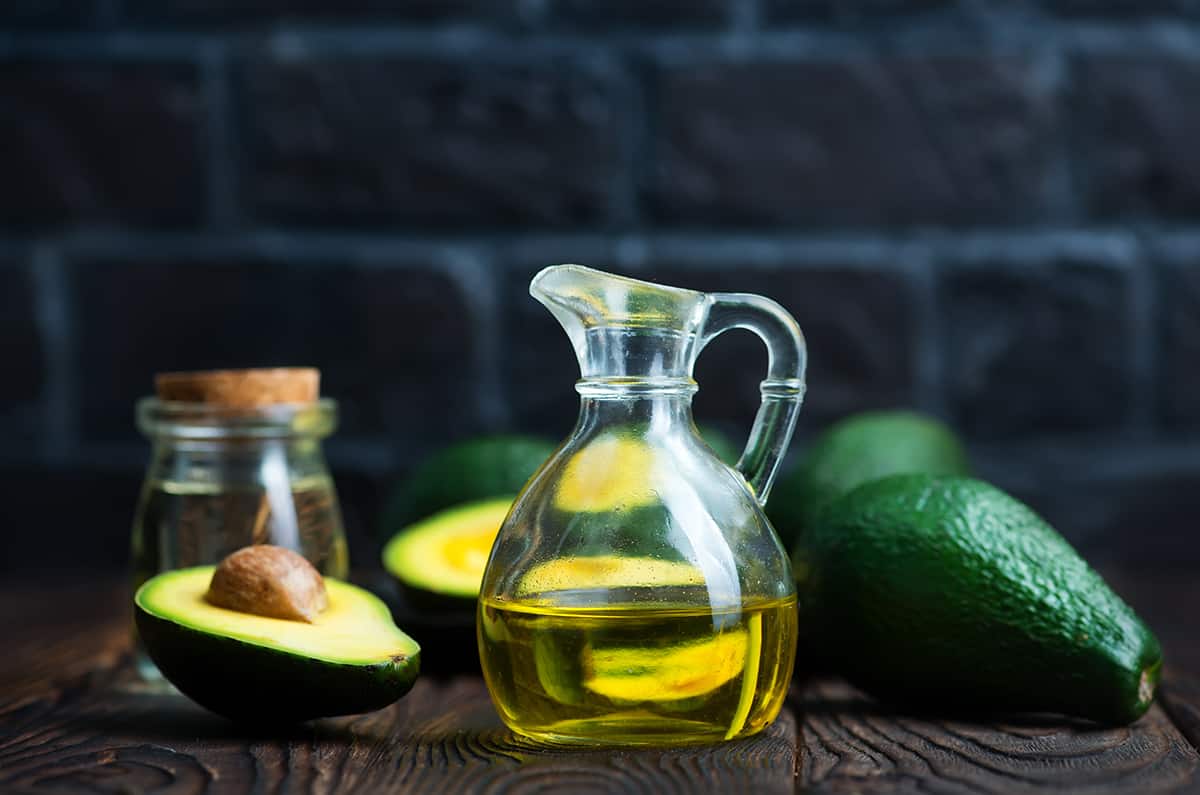
After careful consideration, I’ve concluded that avocado oil is the superior type of fat for deep-frying turkey. Avocado oil has incredibly high smoke and flash points of 520 and 600°F, respectively, and it “only” contains about 400 grams per gallon. In short, all three variables are perfectly balanced.
To give you a better understanding of why avocado oil is the best oil for deep-frying turkey, let’s see how it compares to other types of frying fats.
| Type of Frying Oil | Smoke Point | Flash Point | Saturated Fat per Gallon |
| Avocado Oil | 520°F | 600°F | 400 g |
| Peanut Oil | 446°F | 633°F | 592 g |
| Palm Oil | 489°F | 615°F | 1,696 g |
| Sunflower Oil | 471°F | 606°F | 448 g |
| Lard | 464°F | 626°F | 512 g |
| Soybean Oil | 464°F | 626°F | 544 g |
| Canola Oil | 457°F | 619°F | 272 g |
| Corn Oil | 455°F | 617°F | 448 g |
| Cottonseed oil | 450°F | 606°F | 896 g |
| Rice Bran Oil | 446°F | 615°F | 688 g |
| Olive Oil | 410°F | 410°F | 480 g |
| Grapeseed Oil | 420°F | 445°F | 336 g |
Sources: Centrafoods.com, USDA.gov
As you can see from the table, the majority of frying fats have a higher flash point than avocado oil, and canola oil and grapeseed oil have considerably less saturated fat.
However, none of the other oil tapes can stand up to avocado oil in terms of its smoke point (520°F), which is the first thing you should consider when deep-frying anything. While the margin between the smoke and flash points of avocado oil is slimmer than the other types of frying oil, you shouldn’t have much trouble keeping your backyard burner from catching fire, as long as you maintain a steady 350°F frying temperature.
However, if you can’t get your hands on avocado oil, or if you’re allergic to avocados, then the next best type of deep-frying oil is peanut oil. Otherwise, sunflower or corn should be fine.
How to Deep-Fry a Turkey in Your Backyard
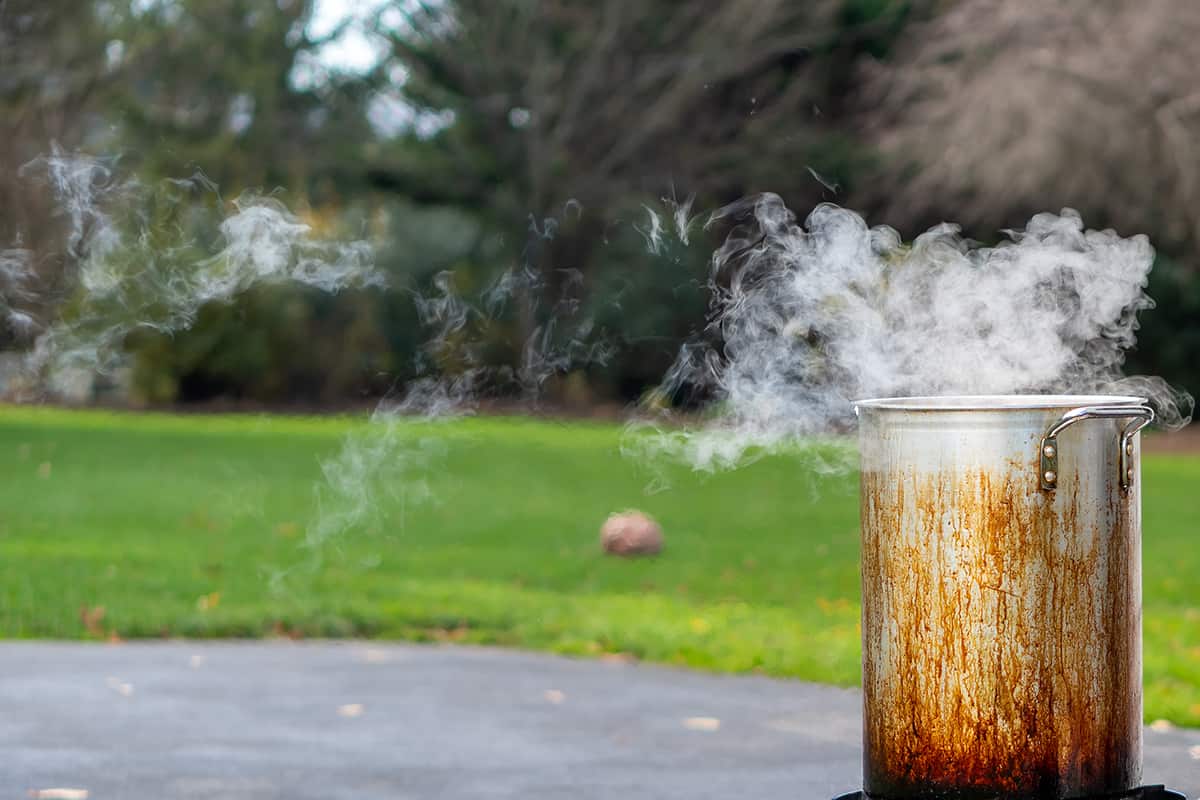
Now that we know about the superiority of avocado oil (and peanut oil to a lesser extent), it’s time to talk about what we’re going to do with it. I’ll explain how you can safely deep-fry a turkey at home.
Before you get started, you should get your hands on the following supplies and materials:
- Propane burner
- 30-quart stock pot (at least)
- Fryer basket/perforated poultry rack
- Candy thermometer
- Long-stem thermometer
- Burn-proof oven mitts
- 3 to 5+ gallons of avocado/peanut/sunflower/canola oil
- A whole turkey
Step 1—Prepare the turkey
You can prepare your turkey for the deep frier in any way you want. I like soaking the turkey in a brine batch for at least 24 hours before frying time, but you can use a rub or marinate. Brining will give the bird a bit of moisture that it will inevitably lose during the deep-frying process.
Before brining or marinading the bird, use it to measure how much oil to add to the stockpot for deep frying the turkey. You can do this by placing the bird inside the stockpot, filing the stockpot with enough water to cover it by at least 3 inches, and measuring how much water you used. You can gauge it by eye or use a measuring cup to scoop out the water one cup at a time.
Step 2—Move the deep-frying supplies outdoors
Never EVER deep-fry a turkey indoors. You should set up the deep-frying station outdoors, preferably in a part of the property that’s far away from leaves and trees. Make sure the propane burner is placed on a perfectly balanced part of your backyard. The less the stockpot wobbles, the less of a risk there is of the stockpot tipping over.
Step 3—Add oil to the stockpot and bring it up to 375°F
Use as much oil as you need to cover your turkey by about 3 inches. You should’ve gotten this figure in the first step.
Turn the propane burner on and use the candy thermometer to check the oil’s temperature. When it has reached 375°F, it’s ready for the bird. It should take just under 20 minutes to bring it up the temperature.
Step 4—Mount the turkey on the perforated rack
You can do this while waiting for the oil to come up to temperature. It makes sure the bird doesn’t wobble around too much. It might be a good idea to truss the turkey’s legs to keep it stable when moving the basket up and down. Use paper towels to pat the turkey dry before adding your final seasonings. Now is the time to stick the long-stem thermometer on the fattest part of the turkey’s upper thigh.
Step 5—Turk the burner off and place the turkey in the hot oil
The propane burner should be turned off before you drop the turkey in. Slowly drop the turkey into the hot oil batch. The oil will begin bubbling as soon as it makes contact with the turkey, so don’t drop the bird in all at once. When the turkey is fully submerged, use the rack’s hanging system to keep it in place.
Step 6—Cook for 3-4 minutes per pound
A 9-pound turkey will finish cooking in about 27 to 36 minutes. A 15-pound bird will finish in 45 to 60 minutes. Large birds weighing over 20 pounds should be fried for at least 60 minutes before checking their internal temperature. When the thigh has reached an internal temperature of 180°F, it’s ready. You might want to take the bird out after the thermometer reads 175°F to give it time to finish cooking outside of the oil bath.
